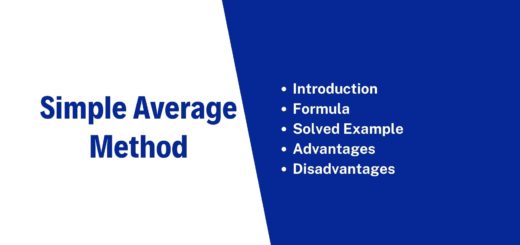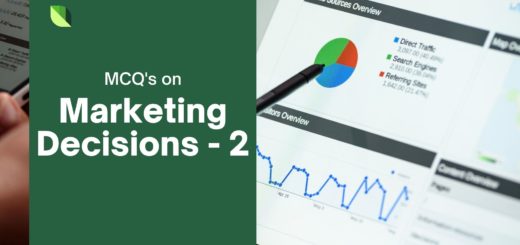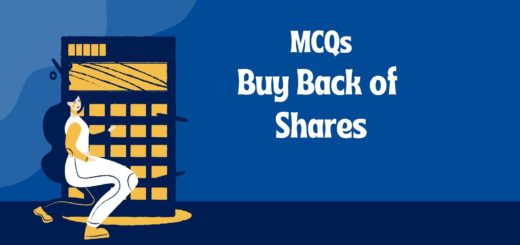Introduction to Cost Accounting | Need for Cost Accounting
Table of Contents
Introduction to Cost Accounting
What is Cost Accounting?
Cost Accounting is the system of accounting concerned with determining the costs of doing something, such as manufacturing, rendering service, or conducting any activity or function. The objective of Cost Accounting is to provide detailed and useful information that is useful to Management for making decisions.
Limitation of Financial Accounting / Need for Cost Accounting
- No clear idea of operating efficiency: Sometimes, an organization’s profits may be less or more because of inflation or trade depression and not due to efficiency or inefficiency. However financial accounting does not give a clear reason for profit or loss.
- Collective results do not spot weaknesses: Financial Accounting shows an organization’s net result. When an organization’s profit and loss account shows less profit or a loss, it does not explain why or show where the weakness lies.
- Does not help in fixing the price: In Financial Accounting, we get the total cost of production but it does not aid in determining prices of the products, services, production order, and lines of products.
- No classification of expenses and accounts: In Financial Accounting, we don’t get data relating to costs incurred by departments, processes separately or per unit cost of product lines, or cost incurred in various sales territories. Further expenses are not classified as direct or indirect, controllable and uncontrollable overheads and the value-added in each process is not reported.
- No data for comparison and decision making: It does not supply useful data to management for comparison with the previous period and for taking various financial decisions as an introduction of new products, replacement of labor by machines, price in normal or special circumstances, producing a part in the factory or buying it from outside market, production of a product to be continued or given up, priority accorded to different products, investment to be made in new products or not, etc.
- No control on cost: Financial Accounting does not help to control materials, supplies, wages, labor, and overhead costs.
- Does not provide standards to assess the performance: Financial Accounting does not help in developing standards to assess the performance of various persons or departments. It also does not help in checking that costs do not exceed a reasonable limit for a given quantum of work of the requisite quality.
- Provides only historical information: Financial Accounting records only the historical costs incurred. It does not provide day-to-day cost information to the management for making effective plans for the future.
- No analysis of losses: It does not provide a complete analysis of losses due to defective material, idle time, idle plant and equipment, etc. In other words, no distinction is made between avoidable and unavoidable wastage.
- Inadequate information for reports: It does not provide adequate information for reports to outside agencies such as banks, government, insurance companies, and trade associations.
- No answer for certain questions: Financial Accounting will not help to answer questions like:-
(a) Should an attempt be made to sell more products or is the factory operating to capacity?
(b) if an order or contract is accepted, is the price obtainable sufficient to show a profit?
(c) if the manufacture or sale of product A were discontinued and efforts made to increase the sale of B, what would be the effect on the net profit?
(d) Why the profit of last year is of such a small amount despite the fact that output was increased substantially? Etc
Financial accounting is developed over time to record, summarise and present the financial transaction or events which can be expressed in terms of money. This function was primarily concerned with record keeping, leading to the preparation of Profit and Loss Account and Balance Sheet.
The information obtained through financial statements is useful to the Management or Owner in several respects. However, the information provided by financial accounting is not sufficient for several purposes of decision making in many areas such as: determining output level, determining product selection – addition or dropping or changing product combination in the case of multi-product company, determining or revising prices of products, whether Profit earned is optimum as compared with competitors and in comparison to earlier years. The need for data for such details leads to the development of Cost Accountancy.
Meaning of Cost
Cost:Institute of Cost and Works Accountants of India, defines cost as “measurement, in monetary terms, of the amount of resources used for the purpose of production of goods or rendering services”.
Thus the term cost means the amount of expenditure, actual or notional incurred or attributable to a given thing. It can be regarded as the price paid for attaining the objective. For e.g. Material cost is the price of materials acquired for manufacturing a product.
Meaning of Costing
Costing: The term costing has been defined as “the techniques and processes of ascertainment of costs. Whelden has defined costing as, “the classifying recording and appropriate allocation of expenditure for the determination of costs the relation of these costs to sale value and the ascertainment of profitability.”
Therefore costing involves the following steps.
- Ascertaining and Collecting of Costs
- Analysis or Classification of Costs
- Allocating total costs to a particular thing i.e. product, a contract, or a process.
Thus costing simply means cost finding by any process or technique.
Meaning of Cost Accounting
Cost Accounting: Cost Accounting is a formal system of accounting by means of which cost of products or service, are ascertained and controlled.
Whelden defines Cost Accounting as, “Classifying, recording and appropriate allocation of expenditure for determination of costs of products or services and for the presentation of suitably arranged data for the purpose of control and guidance of management.”
Therefore, Cost Accounting is the application of costing principles, methods, and techniques in the ascertainment of costs and analysis of savings or/and excesses as compared with previous experience or with standards. It provides detailed cost information to various levels of management for the efficient
performance of their functions. The information supplied by Cost Accounting is a tool of management for making optimum use of scarce resources and ultimately adds to the profitability of the business.
Objectives of Cost Accounting
Objectives of Cost Accounting are as follows :
1) To Ascertain the Cost: To ascertain the cost of the product or services revealed and enable measurement of profit by the proper valuation of inventory.
2) To Analyse Costs: To analysis costs or to classify the expenses under different heads of accounts viz. material, labour, expenses, etc.
3) To Allocate and Apportion the Costs: To allocate or charge the direct expenses or specific costs such as Raw Material, Labour to a particular product, contract, or process and to distribute common expenses to each product, contract, or process on a suitable basis.
4) Cost Reporting: Cost Reporting or presentation includes :
a) What to report i.e. what is the nature of the information to be presented?
b) Whom to Report i.e. to whom the report is to be addressed.
c) When to Report i.e. when the report is to be presented i.e. Daily weekly monthly yearly etc.
d) How to Report i.e. in what format the report is to be presented.
5) To Assist the Management: Cost Accounting assists the management in:
a) Indicating to the management any inefficiencies and extent of various forms of waste of Raw Material, Time, Expenses, etc.
b) Fixing the selling price.
c) Providing information to enable management to take decisions of various types.
d) Controlling Inventory of Raw Material, goods in process, finished goods, spares and consumables etc.
6) Cost Control: Cost Accounting assists the management in cost control. Cost control includes the following stages.
a) Setting up targets of cast and production for each period.
b) Measuring the actual figures of performance relating to cost, production etc. for the period concerned.
c) The figures of actual performance are to be compared with the targets to find out the variation.
d) Analysing the variance, whether favourable or adverse.
e) Immediate action has to be taken in case of adverse variation.
7) Optimum Product Mix: Advise the management in deciding optimum product mix merits and demerits of alternative courses of action viz. make or buy decisions, introduction or Automation mechanization, rationalization, a system of production etc.
8) Future Policies: Advice management on future policies regarding Expansion, growth, capital investment, etc.


